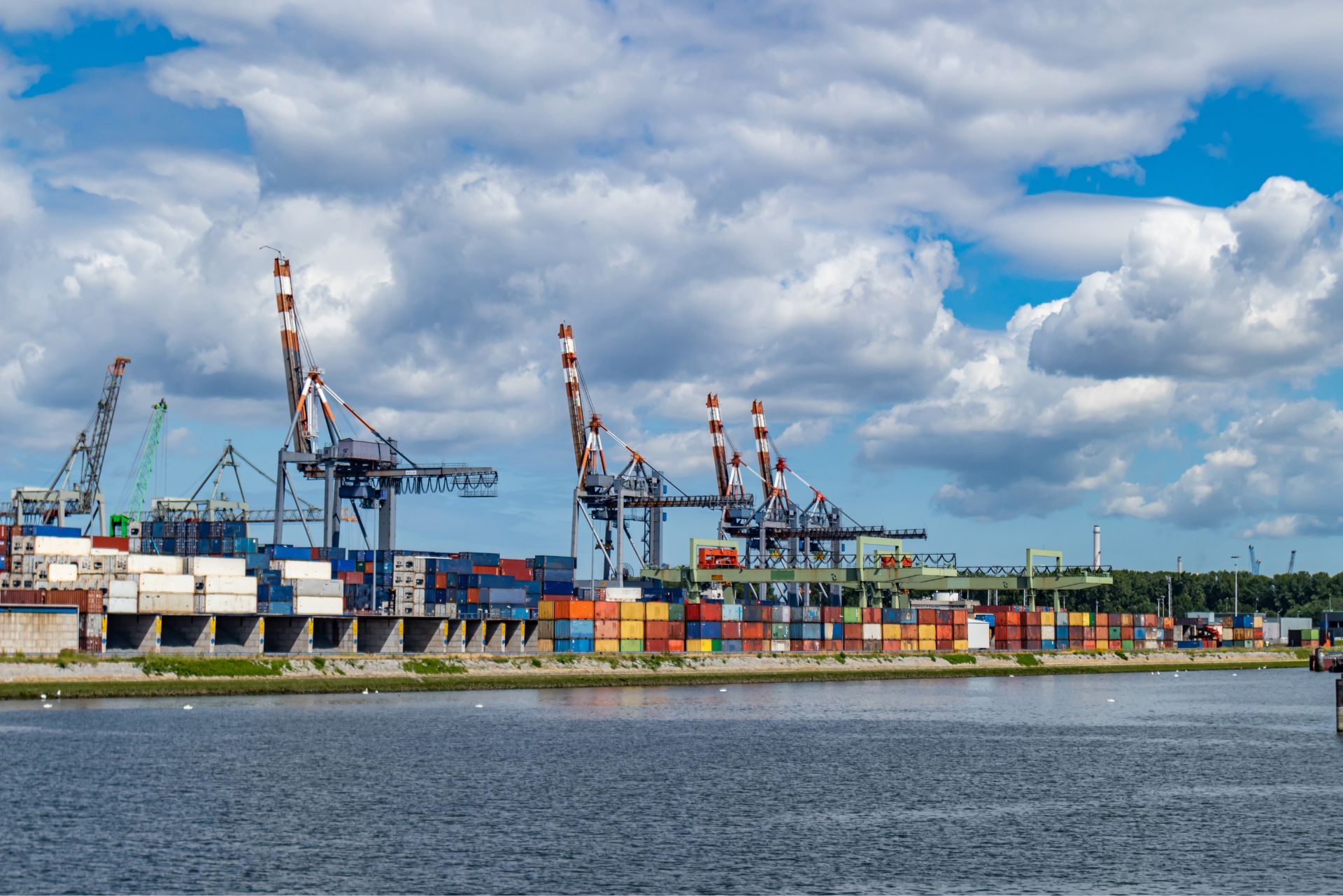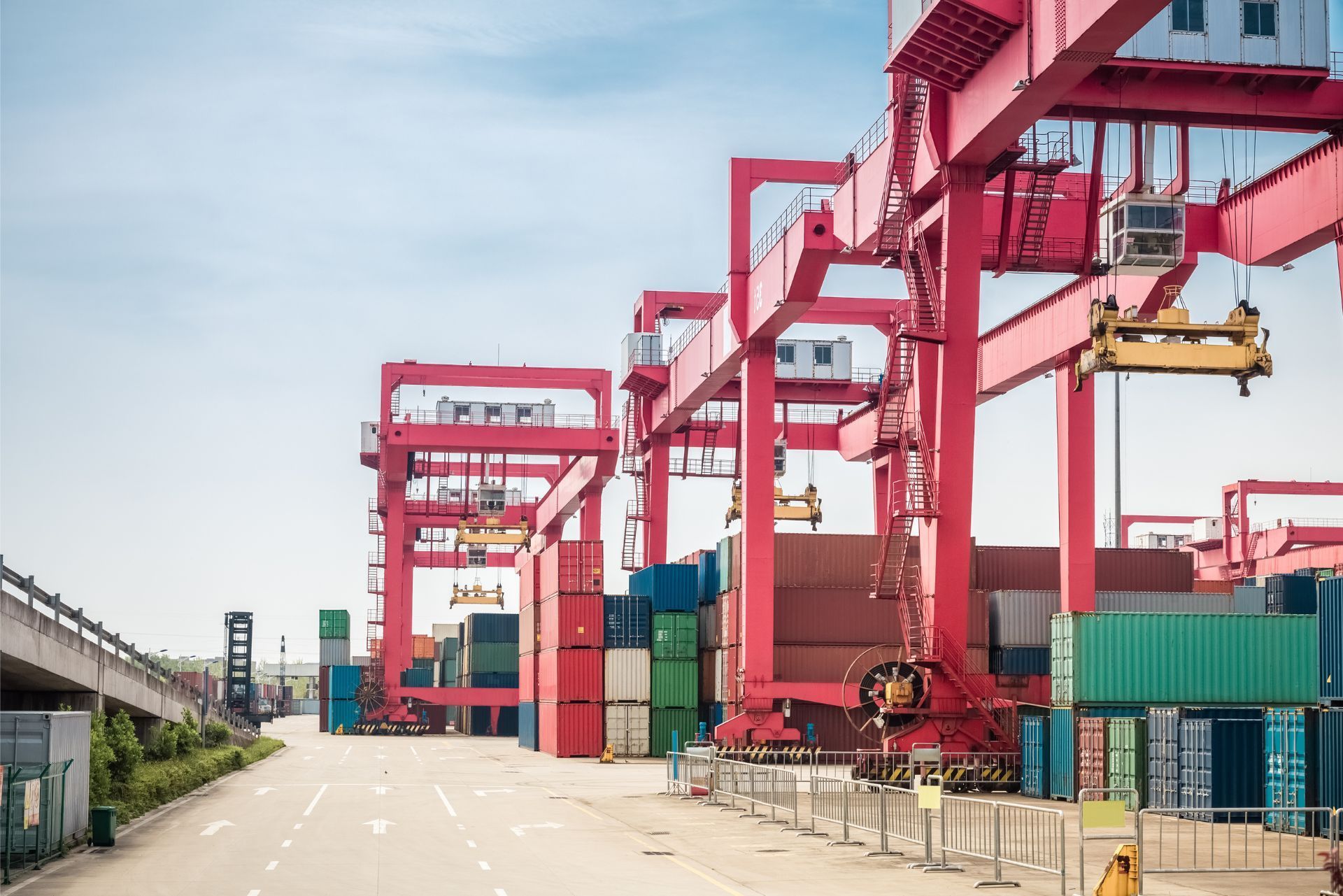Top 3 Recommended Policies

By: Lance Hale
Licensed Commercial Insurance Specialist
425-320-4280
Washington’s economic heartbeat depends on a vast movement of equipment, materials, and specialized property that rarely stays in one place for long. From tower cranes rising above Bellevue’s skyline to shellfish harvesters crossing the Puget Sound, countless businesses face the risk of losing valuable tools or stock while in transit or temporarily off-site. Inland marine insurance steps in where traditional property coverage ends, safeguarding possessions that travel across state highways, rail lines, and waterways. This guide explores how the coverage works, why it matters in the Evergreen State, and what decision-makers should know before choosing a policy or filing a claim.
What Is Inland Marine Insurance?
Historically, the term “inland marine” evolved from ocean marine policies that protected cargo on the high seas. Once railroads began carrying freight inland, insurers adapted the concept to encompass property moving across land. Modern inland marine policies continue that legacy, covering goods, equipment, and related assets while they are in transit, stored temporarily away from the main premises, or used at multiple job sites. Unlike a standard commercial property policy, inland marine coverage follows the property wherever it goes, rather than being tied to a single listed address.
In practice, the policy can apply to a broad list of exposures: contractor’s tools, mobile medical equipment, fine arts on exhibition, camera gear used for on-location shoots, and much more. Because each risk profile is unique, inland marine insurance is often written on a “floater” form that can be customized for the type, value, and mobility of the property. This flexibility is one of the product’s greatest strengths, allowing businesses such as Spokane civil engineers or Yakima fruit exporters to tailor protection that fits their exact operational realities.
Inland marine insurance is particularly beneficial for businesses that operate in dynamic environments where equipment and goods are frequently on the move. For instance, a construction company may have heavy machinery that travels between various job sites, making it essential to have coverage that protects against theft or damage during transit. Similarly, artists and galleries can safeguard valuable pieces of art while they are being transported for exhibitions or shows, ensuring that their investments are protected against unforeseen circumstances. This adaptability not only provides peace of mind but also enhances operational efficiency, as businesses can focus on their core activities without the constant worry of potential losses.
Moreover, inland marine insurance plays a crucial role in industries that rely heavily on technology and specialized equipment. For example, filmmakers and photographers often invest significant amounts in high-end cameras and lighting equipment that must be insured against loss or damage while on location. The ability to customize coverage based on the specific needs of the project allows these professionals to mitigate risks effectively. Additionally, as e-commerce continues to grow, businesses that ship products directly to consumers can benefit from inland marine policies that cover goods in transit, ensuring that they are protected from potential losses during shipping, which can be a critical factor in maintaining customer satisfaction and trust.

Why Washington Businesses Need It
Washington ranks among the most trade-oriented states in the nation, with the Department of Commerce reporting more than $64 billion in direct exports in a recent year. Much of that volume makes at least part of its journey on state roads and rail lines before reaching ports in Tacoma or Everett. Each mile introduces exposure to theft, collision, or environmental damage, and standard cargo liability held by a trucking company may not cover the full replacement cost of a client’s property.
Beyond trade, the state’s booming construction sector underscores the need for inland marine coverage. The Associated General Contractors chapter for Washington estimates that construction activity supports over 200,000 jobs. With project sites scattered from Vancouver to Bellingham, contractors regularly move generators, surveying instruments, and building materials. A tool trailer stolen from a Bellevue road project or severe wind gusts toppling scaffolding in Spokane could translate into tens of thousands of dollars in replacement expenses and lost productivity if the items are uninsured.
Seasonal and natural perils add another layer. Heavy winter precipitation in the Cascades can trigger rapid flooding in river valleys, sweeping away staging yards packed with logging equipment. In summer, dry east-side grasses increase wildfire risks that can scorch mobile irrigation systems or agricultural drones left in the path of a blaze. Inland marine insurance is one of the few policies that can be structured to address these disparate, yet very real, Washington-specific hazards.
Moreover, the state's unique geography and climate contribute to the complexity of risk management for businesses. The proximity to the Pacific Ocean means that companies must also contend with the potential for seismic activity, which can disrupt supply chains and damage equipment. The Cascadia Subduction Zone, for instance, poses a significant risk of earthquakes that could lead to extensive property damage, making it imperative for businesses to have comprehensive coverage that includes inland marine insurance. This type of policy can help mitigate the financial impact of such unpredictable events, ensuring that businesses can recover more swiftly and maintain their operations.
Additionally, Washington's vibrant tech sector, particularly in areas like Seattle and Redmond, has created a demand for specialized equipment that is often transported between locations. High-value items such as servers, networking equipment, and cutting-edge machinery are frequently moved for installations or upgrades. Without adequate inland marine coverage, the loss of such equipment could not only incur substantial replacement costs but also lead to significant operational delays and loss of client trust. As the landscape of business continues to evolve, the need for tailored insurance solutions that address these specific risks becomes increasingly critical for Washington's diverse industries.
Key Coverages Included in an Inland Marine Policy
Although every carrier uses its own manuscript wording, several core protections appear in most inland marine forms sold in Washington. The first is transit coverage, which insures property while it is on a vehicle or common carrier. Whether artisan bakers in Olympia are shipping a refrigerated proofing cabinet to a farmers’ market or a clean-tech startup in Richland is transporting prototype batteries to a testing lab, transit coverage responds to collision, overturn, or theft en route.
A second critical component is equipment floater coverage. This part follows movable gear—think excavators, forklifts, or audio boards—around job sites and short-term storage locations. Limits can be written on an itemized basis, a scheduled list, or a blanket policy that provides a single aggregate limit for all covered items. Deductibles and valuation clauses such as actual cash value versus replacement cost determine the size of any eventual payout.
Many Washington policyholders also elect to add builder’s risk or installation floaters to guard materials destined for incorporation into new construction. For example, custom-cut glass panels sitting curbside in downtown Seattle are covered if a delivery truck backs into the pallet and shatters the load before installation. Additional enhancement endorsements can extend coverage to employee tools, exhibition booths, computerized numerical control (CNC) files, or even data on portable drives—areas not generally addressed by a standard property policy.
Furthermore, inland marine policies can also include coverage for fine arts and collectibles, which is particularly beneficial for galleries and museums in urban areas like Seattle and Tacoma. This coverage protects valuable items against risks such as theft, accidental damage, or loss during transit. For instance, a gallery exhibiting a rare painting may need to transport it to a prestigious art fair, and having this specialized coverage ensures that the artwork is protected from potential mishaps that could occur during the move, such as exposure to adverse weather conditions or improper handling by transport personnel.
Another noteworthy aspect of inland marine policies is the inclusion of cargo insurance, which is essential for businesses involved in shipping goods across state lines or internationally. This coverage safeguards against loss or damage to goods while they are in transit, whether by land, sea, or air. For example, a tech company in Bellevue shipping high-value electronics to a client in California would benefit from cargo insurance, as it provides peace of mind that their products are protected against unforeseen events like shipping delays, container mishaps, or even piracy in certain shipping routes. This additional layer of protection is crucial for maintaining business operations and customer satisfaction in a competitive marketplace.
Common Industries and Use Cases Across the Evergreen State
Construction represents the largest buyer segment, yet inland marine insurance touches many other industries. Film and video producers operating in the San Juan Islands routinely carry camera and lighting floaters because remote shoots complicate logistics and heighten the chance of saltwater exposure or accidental drops. Event planners staging concerts at the Gorge Amphitheatre rely on policies that cover stage rigs, speaker arrays, and promotional merchandise from load-in to load-out.
Tech firms in the I-5 corridor purchase coverage for demonstration equipment that travels to trade shows in Las Vegas or Austin. Wineries in Walla Walla use transit floaters when shipping small-lot barrels for custom blending at out-of-state facilities. Even public entities benefit: municipalities often place fine arts floaters on rotating exhibits displayed in city halls, and school districts protect laptop carts that rotate among campuses. The sheer variety of use cases highlights the adaptability of inland marine insurance to Washington’s diverse economic landscape.
Washington State Regulatory Landscape
Insurance regulation in Washington falls under the Office of the Insurance Commissioner (OIC), which enforces rate filings, consumer protections, and policy form approvals. Unlike some states that mandate inland marine coverage for certain contracts, Washington generally leaves purchase decisions to the business owner or project specifications. Nevertheless, lenders and prime contractors frequently require evidence of inland marine insurance before releasing funds or granting site access.
One compliance nuance involves certificates of insurance. The OIC prohibits language that would render a certificate the policy itself, and it requires producers to issue certificates that accurately reflect underlying coverage without modification. Companies working on Washington State Department of Transportation projects may encounter unique wording requests; collaborating with a broker familiar with local compliance prevents costly delays.
Cost Factors and Premium Benchmarks
Premiums hinge on four primary factors: the total value of property insured, the radius of operation, the loss history, and the chosen deductible. A Seattle-area general contractor insuring $500,000 of heavy equipment with a $1,000 deductible might pay between $4,800 and $7,200 annually, while a boutique Stillaguamish chocolatier covering $60,000 in mobile kitchen gear for weekend markets could see premiums closer to $700.
Underwriters also scrutinize security measures and transportation modes. GPS tracking devices, secured job-site fencing, and climate-controlled storage can all attract credits. Conversely, frequent travel through high-theft corridors—such as interstate junctions near large distribution centers—may push rates upward. For businesses operating statewide, sharing telematics data that proves safe driving behavior often results in additional savings. Taking time to document these risk-management practices before quotation improves pricing leverage and broadens carrier options.
How to Choose the Right Policy
Start by producing a comprehensive inventory that lists each movable asset, its serial number, and its replacement cost. In Washington’s fast-moving real-estate market, replacement costs can climb quickly, so values should be updated at least annually. Next, determine the maximum distance any item might travel—some floaters restrict coverage to a 500-mile radius, which may exclude shipments moving down the West Coast.
Finally, compare policy language regarding exclusions for wear and tear, mechanical breakdown, or voluntary parting caused by fraud. Many carriers will reinstate coverage for mechanical breakdown if a maintenance schedule is on record. Partnering with a broker who routinely places inland marine accounts ensures that endorsements such as “Contractor’s Equipment Rental Reimbursement” or “Tool Theft Deductible Buy-Down” are included where beneficial.

Filing and Managing Claims
When a loss occurs, prompt documentation is essential. Photographs, police reports, and serial numbers help the adjuster verify ownership and establish cause. Washington statutes require insurers to acknowledge a claim within ten business days, but supplying complete evidence can accelerate settlement dramatically. Contractors who logged pre-loss equipment photos and maintenance logs often resolve straightforward theft claims in two weeks or less.
During wildfire season, state and federal agencies may restrict site access, delaying formal inspections. In such cases, insurers sometimes authorize emergency repairs or replacements up to a stated limit so business can resume. Retaining repair receipts and maintaining open communication with the claims examiner prevents disputes and ensures reimbursement aligns with policy terms.
Emerging Trends and Risk Considerations
Technological change is reshaping inland marine risk profiles. Construction firms now deploy unmanned aerial vehicles for surveying, and those drones need specialized hull and payload coverage, especially when operating near Seattle-Tacoma International Airport’s controlled airspace. Separately, the proliferation of lithium-ion batteries raises concerns about thermal runaway fires during transit, prompting underwriters to ask detailed questions about packaging and temperature monitoring.
Climate change also plays a role. The National Weather Service notes that Washington experienced a 30 percent increase in heavy precipitation events over the past four decades. Sudden downpours can flood temporary storage yards along the Snohomish and Yakima rivers, damaging unprotected machinery. Businesses that integrate flood-resistant storage containers and elevate electrical components above historic high-water marks lower both claim severity and premium volatility.
Frequently Asked Questions
Does inland marine insurance cover property left overnight in a vehicle?
Yes, but only if the policy expressly grants theft coverage from a locked vehicle and security requirements—such as activating an alarm—are satisfied. Always check sub-limits; many insurers cap vehicle theft losses at an amount lower than the overall policy limit.
Are employee-owned tools automatically included?
Generally not. Most forms require an endorsement to extend coverage to employee property. Payroll records and tool allowance agreements help the insurer gauge exposure and set appropriate limits.
How does valuation work after a loss?
Policies rely on either replacement cost or actual cash value. Replacement cost pays what it would take to buy a new equivalent item, while actual cash value deducts depreciation. Confirm which basis applies before binding coverage.
Can a single policy cover items stored or used outside the United States?
Some carriers offer worldwide floaters, but many standard inland marine forms restrict coverage to the continental United States and Canada. If international travel is expected, request an endorsement that extends territory limits or purchase separate foreign coverage.
Conclusion
Inland marine insurance may sound like a niche product, yet for thousands of Washington enterprises it is the financial backbone that keeps projects on schedule and shipments on course. A well-designed policy protects against theft in Tacoma rail yards, windstorm damage on Whidbey Island construction sites, and transit collisions along I-90. By understanding coverage options, complying with state regulations, and implementing robust risk-management measures, businesses can secure broad protection without overpaying.
Ultimately, safeguarding mobile assets is not just about replacing equipment; it is about preserving reputations, meeting contractual deadlines, and maintaining competitive momentum in one of the country’s most dynamic regional economies. With informed choices and proactive planning, Washington companies can keep their property moving confidently from the Cascade peaks to the Columbia River and everywhere in between.

